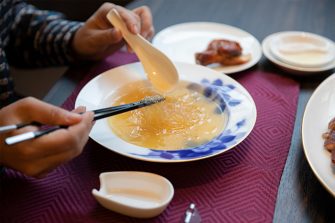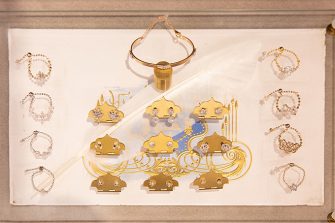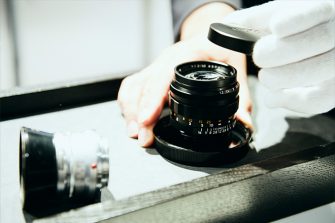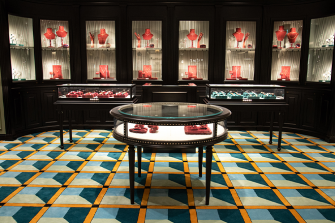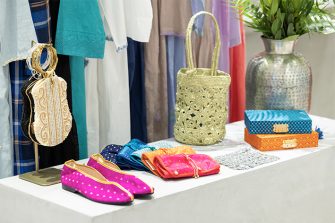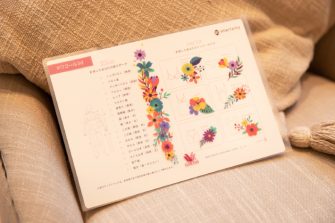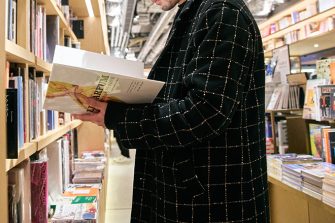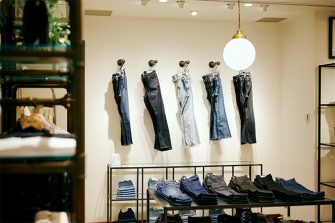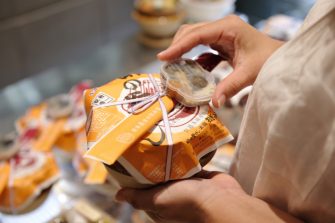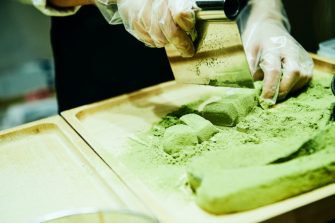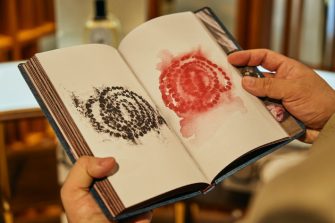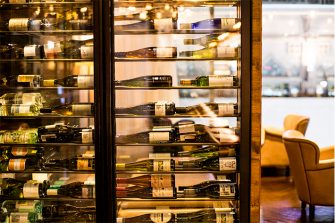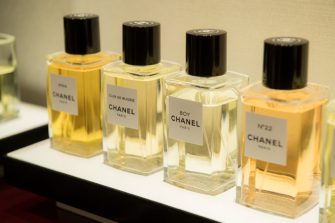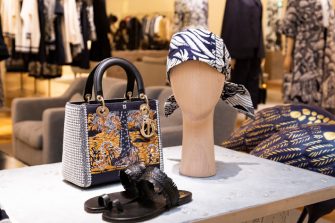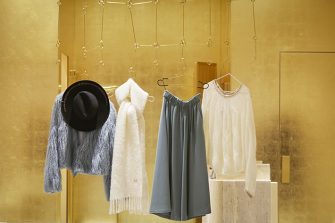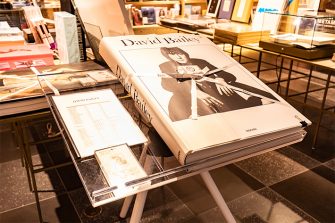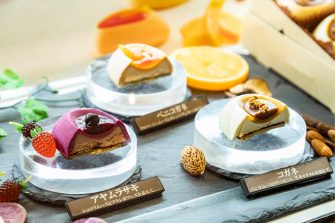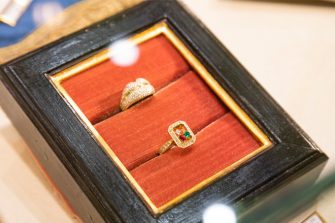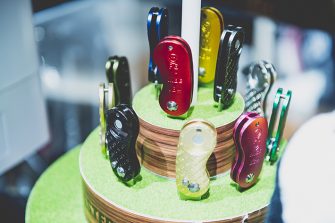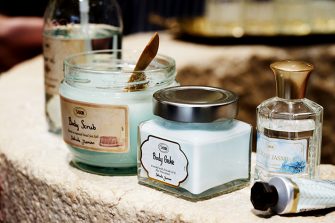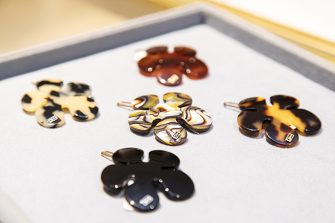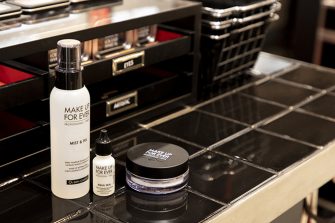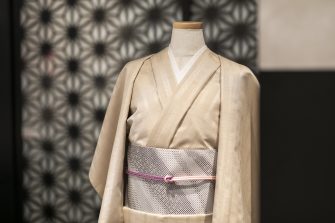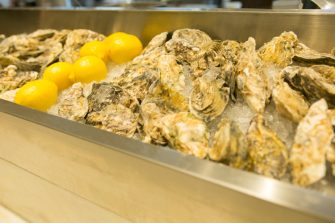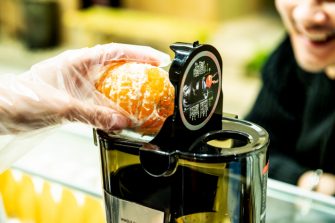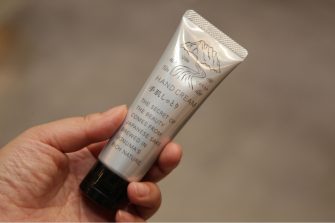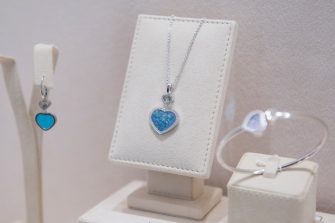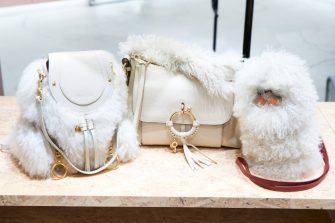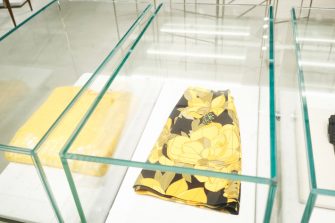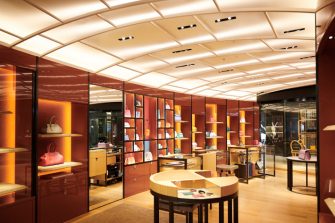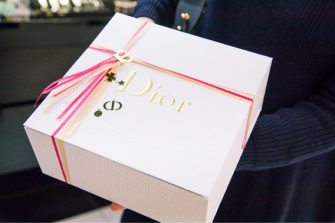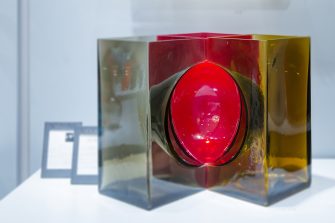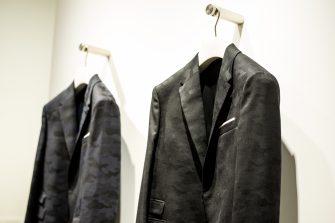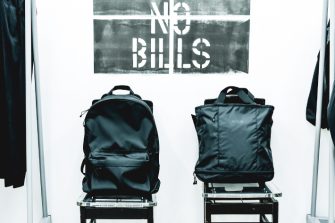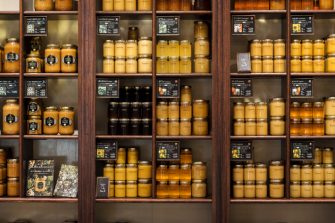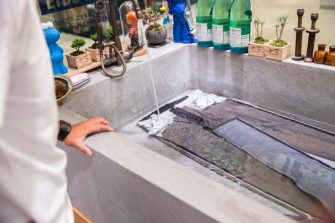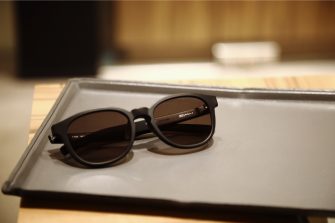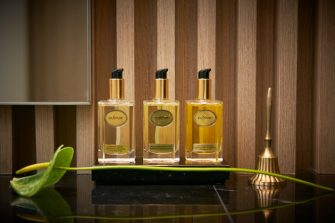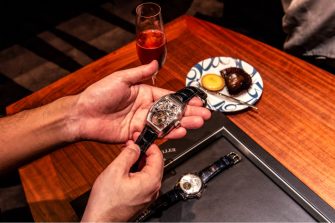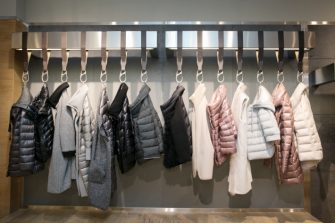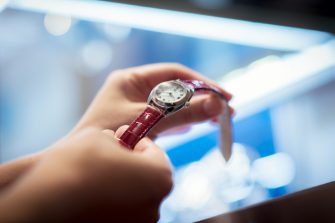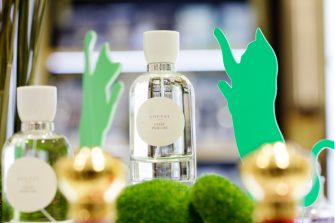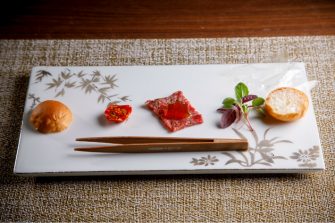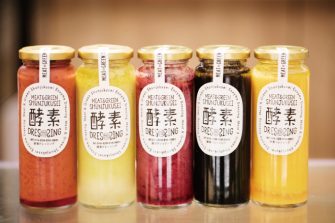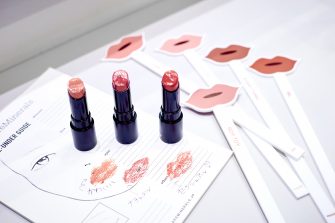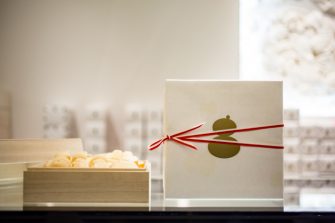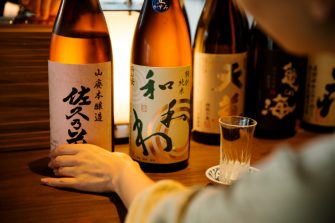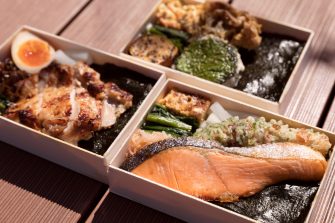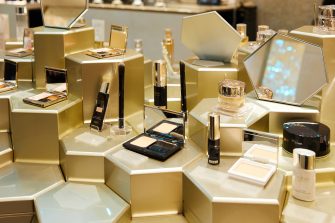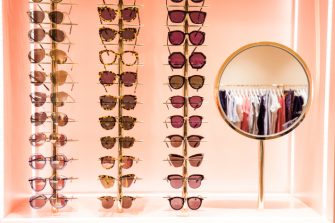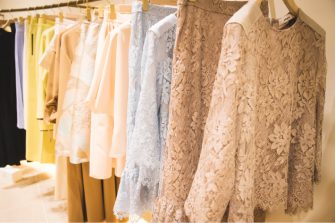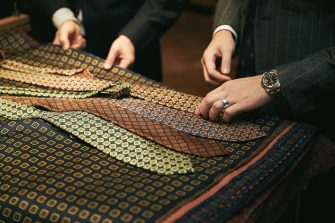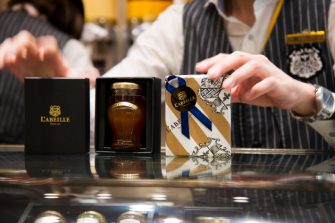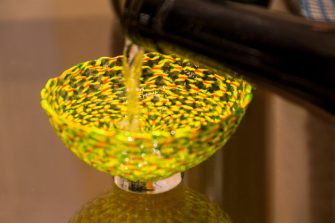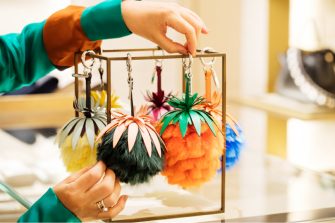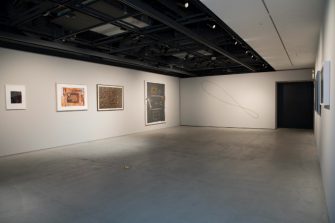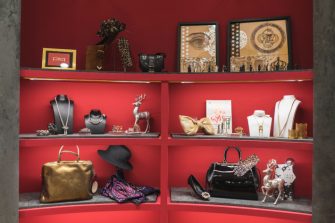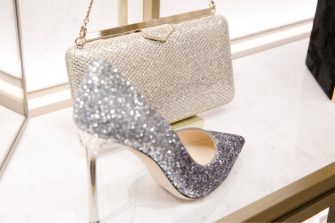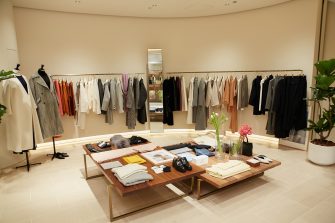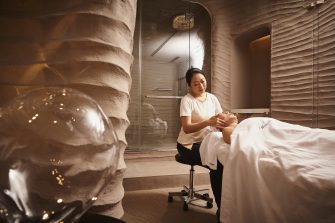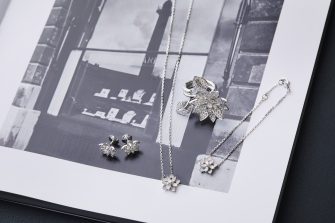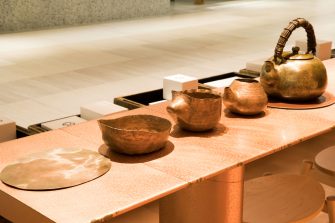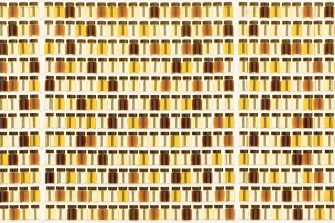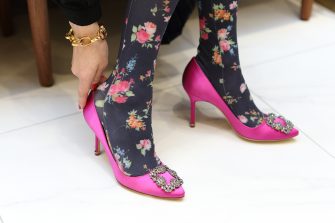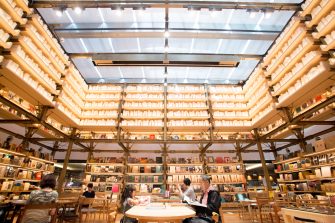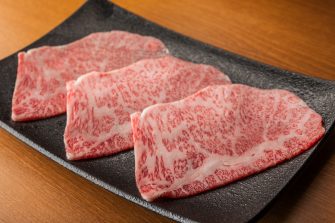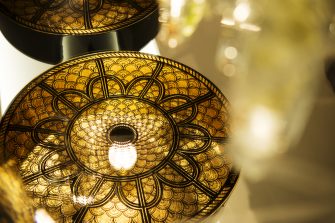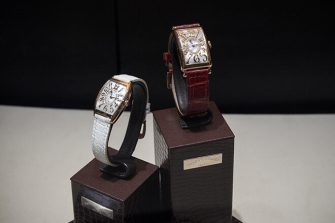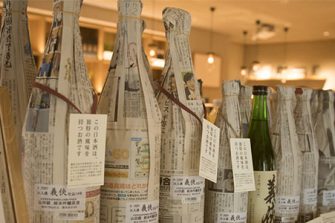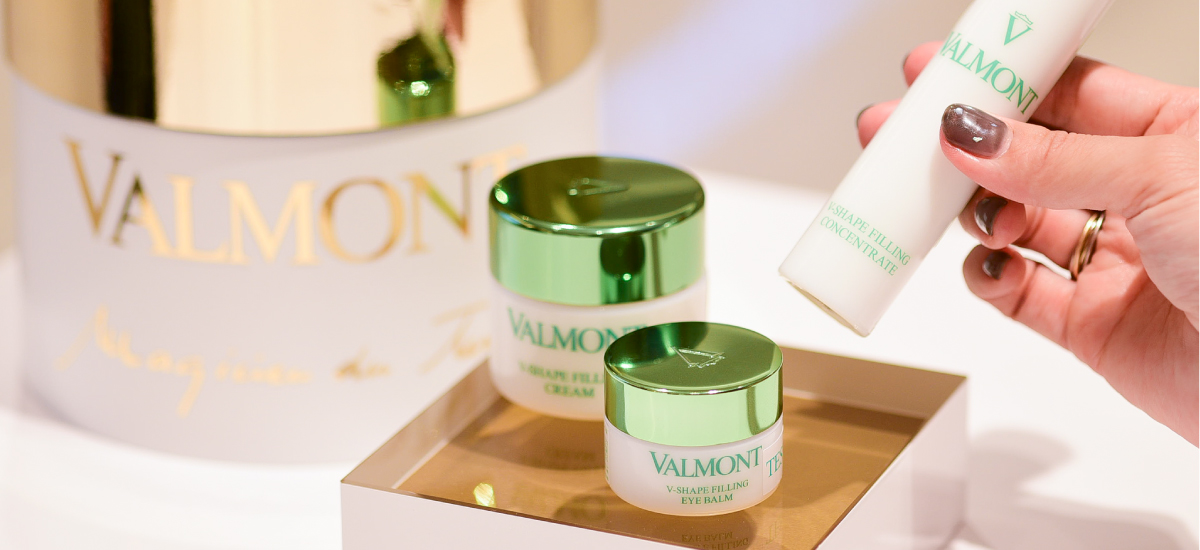

GINZA SIX EDITORS
时尚、珠宝&手表、生活方式、美容、食品…
精通各种类型的个性丰富的编辑们,在GINZA SIX上闲逛
记述走路发现的乐趣。
为了回应双职工的好奇心和实用,银座的垃圾散步 A Calming Ginza Walk Piques Curiosity and Meets Practical Needs for Those with Multiple Professions
谷宏美
GINZA SIX EDITORS Vol.59
因采访、发表会、试饮会等频繁到访的银座,是私人生活中经常去的街道。已经成为长年习惯的每月观剧、和人约会的吃饭等等,都是抱着小小的心情出门的。自GINZA SIX开业以来,在银座参拜变得更加丰富多彩。以只有这里才有的价值为基础进行企划调查和外景拍摄,也能得到日常生活中需要的东西。我的和服穿着率也很高,但是能接受这个的也只有银座的空气感。这个“闲逛”是以葡萄酒和美容为生业,能够充分满足我穿着打火机和苏姆丽埃尔的双脚草鞋的兴趣和实用需求。

歌舞伎的时候果然还是小绸。看完上午部后以和谐的气氛开始的“闲逛”,首先从6楼的“银座茑屋书店”开始。众所周知,以艺术和设计为焦点的选择十分充实,而且对于喜欢江户、喜欢花魁、利休相关的书籍无论怎么读都不会厌倦的自己来说,日本文化专柜的“橹”是令人心跳的地方。
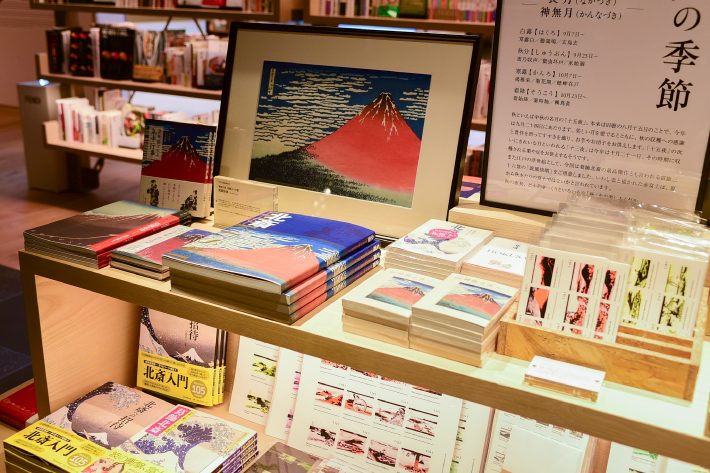
在特设角,近年来在世界范围内流行的北斋为特色,与富岳三十六景的“凯风快晴”通称赤富士一起陈列着许多北斋本和商品。在自己工作的酒吧,正因为举办了北斋的艺术谈话,所以为了被吸引,手上拿着北斋本。木版画专业的版元艺草堂《北斋-让世界着迷的浮世绘师和弟子们-》、《更想知道的葛饰北斋》(东京美术)等充满图解的名版真不愧是有。
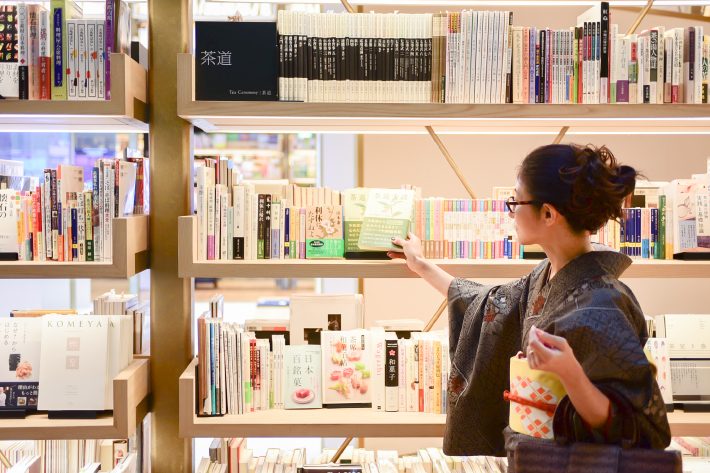
后面是茶道书的专柜。不仅是豪门书,还有建筑、美术、料理、纺织品等综合艺术,因此有多种多样的书籍。大概无论在哪里做什么工作,茶道都是坚持下去的毕生事业。因为有利休研究书、利休以及描写周边人们的小说就买了。熊田苇城著的《茶道美谈》(宫带出版社)令人目不暇接。利休和战国时代的武将和数寄者们关于茶的故事,从古文献和书信中摘录出来的逸闻集。因为是复刻的东西,装订也很美,所以读一下吧。

对廓文化也有着非同寻常的兴趣,喜欢在松井今朝子和隆庆一郎的文学中看到美丽而悲伤的世界旅行。甚至还妄想着脱胎换骨后想作为花魁活下去(笑)。从游女到最高等级的关于太夫的书籍,综合书店只有这里吧。《全国游廓指南》之类的,令人欣慰。旁边是春画角。虽然和浮世绘一起备受瞩目,但是从架子上拉出来需要一些勇气。
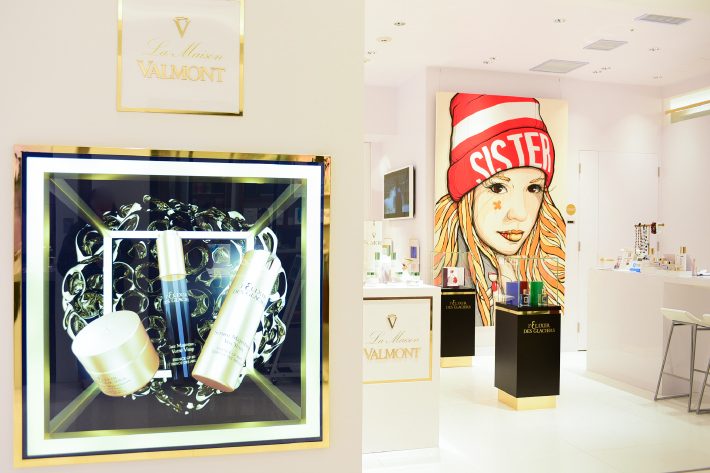
接着是地下的化妆品层。因为是双脚草鞋,所以比起编辑部员的时候,自由的现在更忙。因此,在皮肤保养方面寻求,也能快速提升正在恶化的肌肤。来自瑞士的实力派护肤“巴尔蒙”是以前在巴黎的帕拉斯酒店“卢武铉”的SPA进行采访,了解其卓越效果后成为粉丝的品牌。在现代艺术家的支持下,《拉·梅森·巴尔蒙》中也装饰着柏林街头艺术家艾尔·博乔的作品《Syster》。
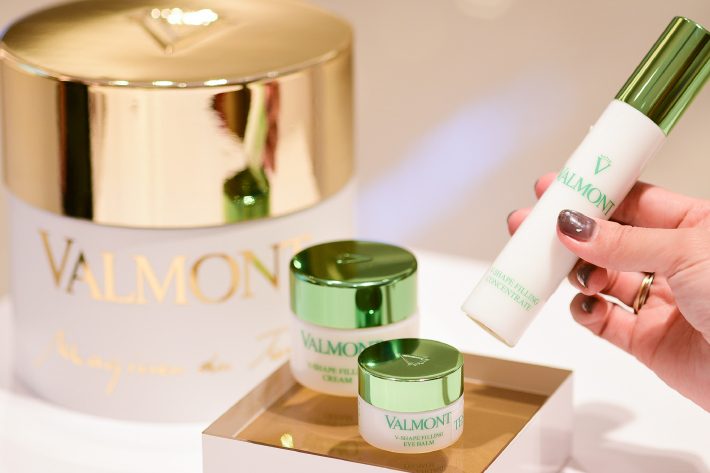
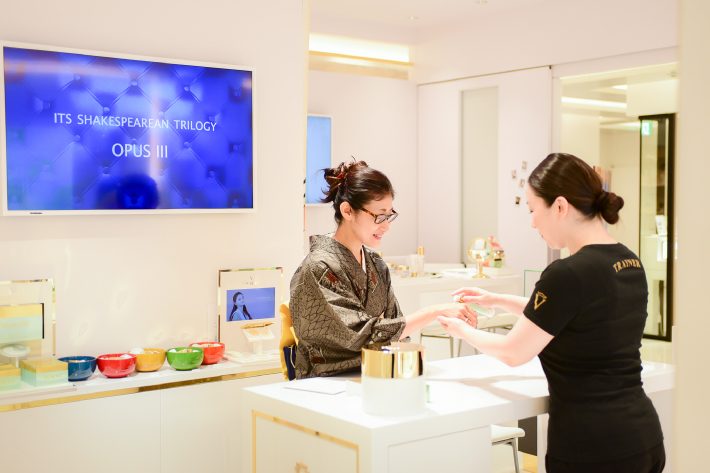
今年秋天更新的AWF5系列,将目标集中在弹性、透明感、松软感等5个因素上,独自配合有效果的成分。而且各自发挥相乘效果,提高效果的划时代的线条。由于弹性严重衰退,请介绍具有收紧效果的“V形状”线(V塑形插座率¥32000・30ml,同奶油¥35000・50ml,同艾巴姆¥25000・15ml※以下全部不含税价格)。浓密的奶油和清爽的纹理美容液,还有独特的眼珠。啫喱状的纤细纹理,用手指啪嗒啪嗒地贴在眼睛上,就会一下子停下来。瞬间切实感受到眼睛屁股上升,这很好,扫帚线也很紧张。凤蝶。
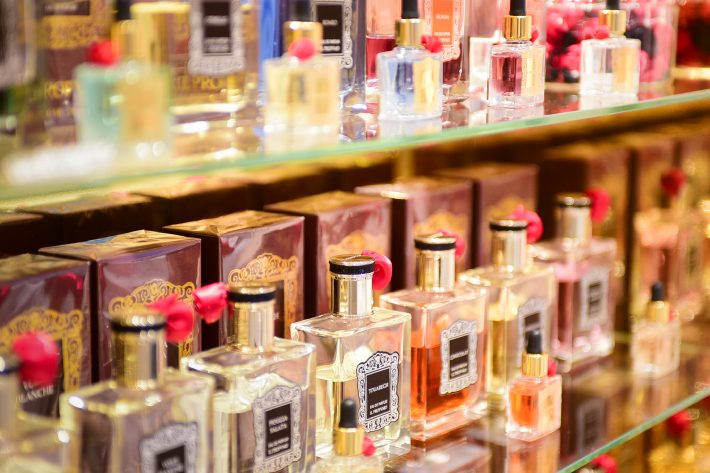
在拉梅森·巴尔蒙,特写意大利的独立性系香氛“伊尔普罗夫”也是特别写的。正因为意大利的传统艺术是灵感,所以被古典美丽的瓶子吸引。但是波洛尼亚出生的席尔瓦纳·卡索里亲手制作的香味极为摩登自然。喜欢纤细的玫瑰,以莎士比亚的作品为印象来源的《雷神》和《罗密欧》等日常使用的香味。如果是格鲁曼系的“巧克力”和“姜汁”的话,在葡萄酒的场景中也不错。
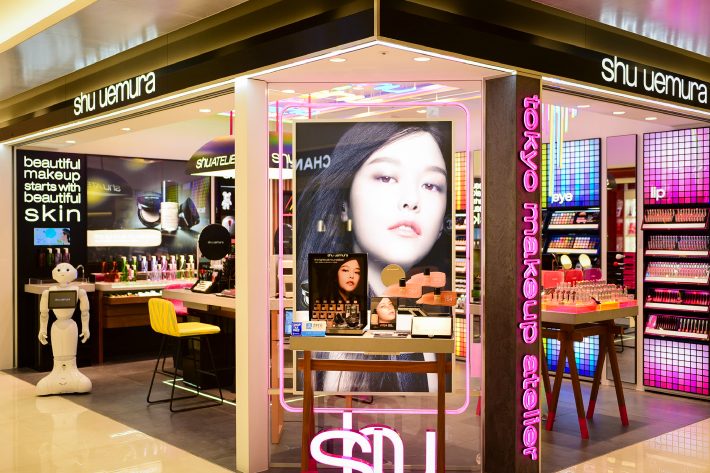
顺便说一下,编辑器是黑子,所以自己的容貌即使适当也被允许(?)但是,现在站在店里为客人服务的现在,太过于在意是不行的。被要求弯弯曲曲的时候也能看得清楚…。怀着这样的心情去“施威村”。用底妆和化妆想办法解决吧。
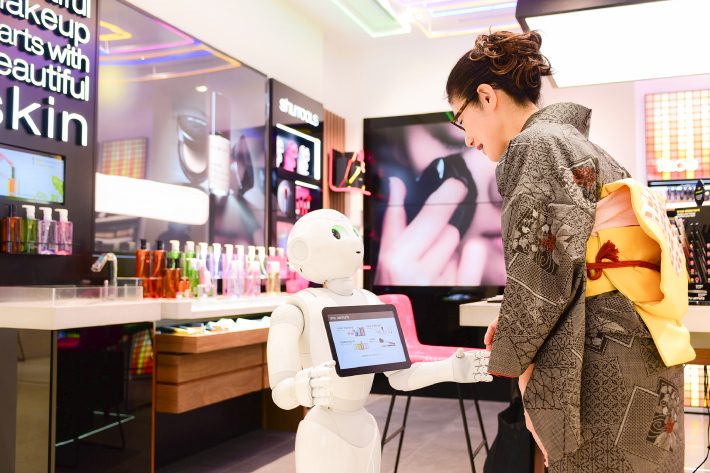
店内胡椒君说:“您在找什么?”并为我介绍了我需要的物品。因为胡椒君认真回答我,所以我会认真商量的我…。

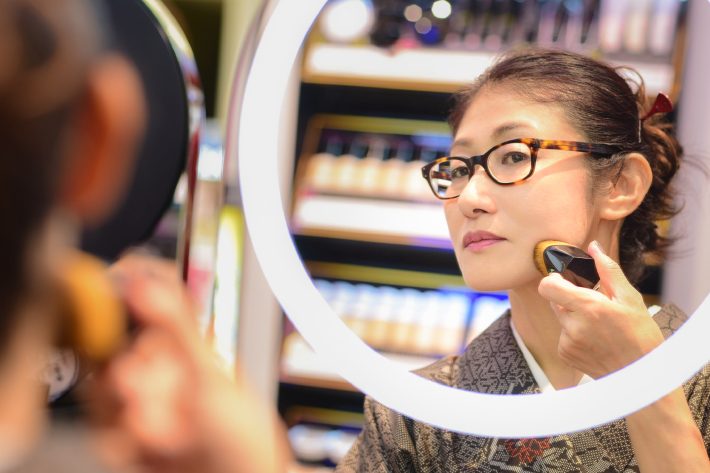
进化的名品粉底“The Light阀”系列。用像葫芦一样形状的海绵咚咚咚,打造出自然的光泽肌肤,是艺人品牌特有的优秀底妆。今年提升了力量的光环(全13色30ml/SPF25 PA+++各¥5200),既能实现如今润滑的光泽肌肤,又能充分弥补阿拉。因为选择肤色而不是肤色,所以和白色浮起无缘,能够实现大人的肌肤真是太感谢了。葫芦海绵的话会有漂亮的光泽,而且使用了18万9000根毛的高密度刷子的话,会给人一种端正的印象,和装也很好。顺便说一下,这个刷子的形状是由施欧姆拉的艺术家在银座看到的显示器窗口中诞生的。
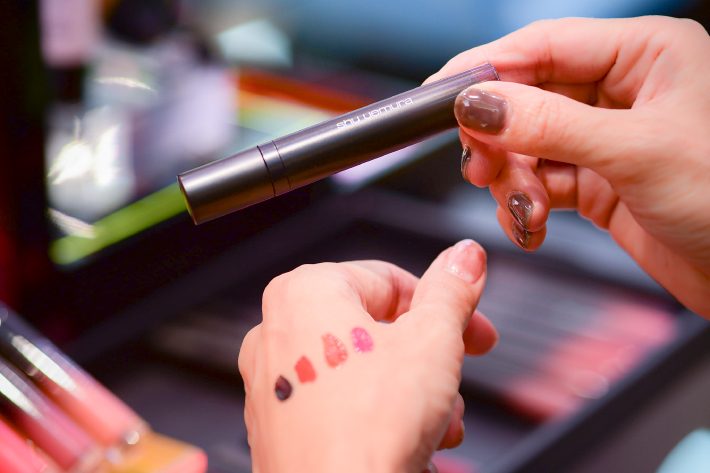
10月1日出道的新唇膏“马特修普里亚”(全15种颜色各¥3200)也要看。垫子的纹理和鲜艳的发色,浓密的颜色能提升妆感。这种质感和雅致的色调非常适合和服的妆容。染发中加入黑色也是艺术性的。

此外,一定要去的“现在银座”,日本酒的种类齐全,日本红酒的阵容也十分充实,其稀少的阵容是其他店无法追随的。拥有强烈意志和坚持的日本小规模生产者不愿意放在流通渠道上,生产量少,流通也有限,所以实际不去酿酒厂就不能购买的东西也不在少数。但是在这里,因为在当地也能买到断货的东西,还放着一个只能买到的卡尔特酿酒厂的物品,所以我想每次都会惊讶地发出声音:“啊,有这样的稀有物品!”店长大川翔平先生说,经营着100种左右的日本红酒。日本的酿酒厂数量现在约330个,数量惊人。
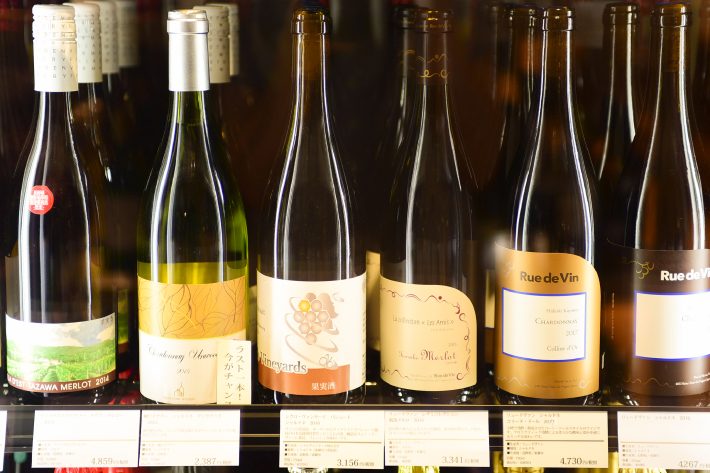
这天,发现了前几天因采访而到访的长野县东御市的葡萄酒,并发出了声音。维拉德斯特花园安德农场和卢多万等东御有名的酿酒厂并排有“牡丹农场”和“环城农场”。这些都是从首都圈移居到东御开始栽培葡萄的家族经营的小农家。环城今年开工建设酿酒厂,明年的复古开始可以本公司酿造,但是现在双方都以将葡萄带到附近的酿酒厂的委托酿造的形式制造葡萄酒。当然生产数量很少。因为刚刚采访了对葡萄酒制造的热情,所以很感激在银座再次相遇了饱含这种想法的葡萄酒,我非常感激。
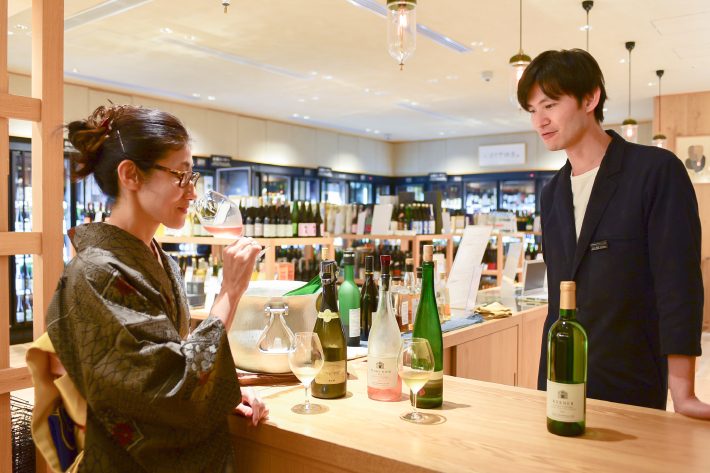
适合闲逛的是角打。现在银座可以每天更换4~5种葡萄酒和日本酒。这一天,可可农场用租赁林制作的瓶内二次发酵的火花“野田Bruct 2014”(¥1000),充满透明感的非常有魅力的“北葡萄酒Pino Noirloze 2017”(¥700),在凉爽的土地上好好地等待成熟的纹理让人受不了的“藤泽农场余市凯尔纳2015”(¥700)。都很好。能够用双倍玻璃喝到稀有的日本红酒是最幸福的。
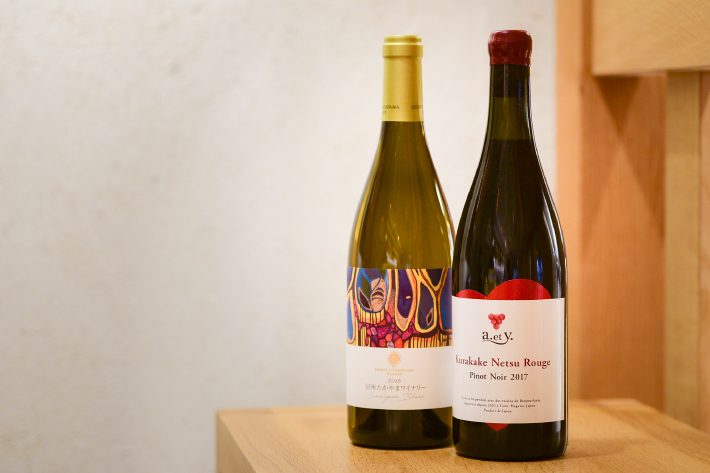
最后,我们购买了采访之后被其纯净味道所吸引的“ぼんじる农场克拉卡肯尼兹比诺瓦2017”(¥3,340)和“信州高山酿酒厂索维尼永布兰2016”(JPY¥3,340)和“信州高山酿酒厂索维尼永布兰2016”(JPY¥3,340)和“信州高山酿酒厂索维尼永布兰2016”。这也是一款备受瞩目的攀岩项目,是买家们推荐的吧。更进一步! 寻找的某酿酒厂的超人气单品(哭)! 就像日本葡萄酒的仙境一样,来到这里真的什么都能找到。
在GINZA SIX上,能够激发双工作者的好奇心,并暗示必要的东西。今天也能来真是太好了,回家的路上的步伐也很轻松。
Text:Hiromi Tani Photos:Midori Yamashita Edit:Yuka Okada
I often go to Ginza for job-related research, announcements, tastings, and other events. I visit quite often on my own time, too. For years, I’ve gone monthly to the theater in Ginza. Sometimes I’ll meet people here for lunch or dinner. I visit quite often for various special occasions. Since GINZA SIX opened, these pilgrimages to Ginza have become even more varied. Based on the value I can find only here, I do research for articles, scout locations, and pick up things I routinely need. I often wear a kimono, garb for which the atmosphere here is especially welcoming. As someone who makes her living in the two spheres of wine and beauty—as a writer and sommelière—I find GINZA SIX meets both personal and professional needs.

For kabuki theater-going, I wear a tsumugi fabric kimono. A traditional Japanese mood maintains its grip as I start my wandering through GINZA SIX, after I take in a morning performance. First, I head to Ginza Tsutaya Books on the sixth floor. As you may know, the arts and design book section is extensive. Since I’m someone who is enthralled by aspects of the Edo culture, such as oiran courtesans, someone who never tires of reading books on the tea master Rikyu, I’m always quietly thrilled with the Yagura Japanese culture section.

There’s a special display right now featuring Hokusai, whose popularity in recent years has been global. It features the artist’s “Fine Wind, Clear Morning” print, commonly known as “Red Fuji,” from Hokusai’s Thirty-Six Views of Mount Fuji, along with a profusion of Hokusai books and products. The wine bar where I work recently hosted a talk on Hokusai, so I’m drawn to this particular display and pick up a Hokusai book. Some, of course, are filled with color plates: examples include famous pieces such as “Hokusai: The Ukiyo-e Master and His Disciples Who Captivated the World,” published by Unsodo, a specialist in woodblock printing, and “Learn More About: Katsushika Hokusai” published by Tokyo Bijutsu. That’s why I love this place.

Behind the Hokusai display are the tea ceremony books. There are how-to books, of course, but also a wide range of other books reflecting how the tea ceremony as an art form touches on architecture, art, food, textiles, and other arts. The tea ceremony is my life’s work, something I’ll continue doing wherever I happen to be or whatever else I’m doing. If I come across a study of Rikyu or novels depicting Rikyu and his circle, I cannot resist buying it. In a genre not necessarily known for an outpouring of new publications, Ijo Kumada’s “Tea Ceremony Tales” (Miyaobi Publishing) catches my eye. The volume collects anecdotes from ancient writings, letters, and other documents related to the tea ceremony and involving Rikyu, Warring States military commanders, and tea masters. The book is a lovely reissue, beautifully bound, and I resolve to read it.

I’m also interested in historical courtesan culture and love visiting the sad, beautiful worlds depicted in literary works by authors like Kesako Matsui and Keiichiro Ryu—to the point that I fantasize about being reborn as a courtesan. From harlots to high-ranking courtesans, only a major bookstore like this could stock so many titles on this particular aspect of history and culture. There’s also the “Nationwide Guide to Red Light Districts,” a volume that makes me restless. Right next to this is the erotica section, which now draws public attention like ukiyo-e, even if it takes some courage to pull a book down from the shelf.

I eventually find myself making my way to the belowground cosmetics floor. Since I work two jobs, I’m busier now as a freelancer than when I was as an in-house editor. What I want out of skincare these days is an instant, effective boost for my aging skin. Valmont is a Swiss brand of powerful skincare products. I became a fan while doing research on the spa at Le Meurice, a palace hotel in Paris, and learned about the remarkable efficacy of this brand. The brand also happens to support the arts and contemporary artists. La Maison VALMONT here displays a work, “Sister,” by the Berlin street artist El Bocho.


Updated this fall, the AWF5 series focuses on five factors, including elasticity, transparency, and fullness, and offers products composed of unique blends of efficacious ingredients. The innovation of this line lies in generating and harnessing the synergies among the various ingredients. My skin’s elasticity is apparently decreasing, so I’m shown the tightening V-Shape line (V-Shape Concentrate 32,000 yen, 30 ml; V-Shape Cream 35,000 yen, 50 ml; V-Shape Eye Balm 25,000 yen, 15 ml; all prices listed before tax). The Concentrate is a rich cream, but the texture is smooth and not sticky. The unique Eye Balm features a thick gel-like texture. When you dab it with a finger around the eyes, it stops and stays there. I feel the corners of my eyes instantly lift; it also tightens my laugh lines. All in all, it leaves me in higher spirits.

La Maison VALMONT, it should be noted, also lets you try IL PROFVMO, an independent Italian fragrance. Inspired by traditional Italian art, the beautiful bottle with its classic design is itself eye-catching. The fragrance, created by Bologna-born Silvana Casoli, is, by contrast, modern and nature-inspired as well. I love the delicate rose, too. Lysander and Romeo, inspired by Shakespeare’s plays, are fragrances for daily use. The gourmand series with Chocolat and Ginger would no doubt work for the wine scene.

Since editors generally work behind the scenes, I’ve tended to think a casual presentation is tolerable—or so one would hope!—but I also currently serve customers at a wine bar. Here, an indifference to one’s appearance is considered deplorable. Even if one falls short of perfection, an effort to look good is the norm. Hoping against hope, then, I head to Shu Uemura with the idea of getting some base and makeup.

Pepper, the robot, greets me at the entrance and asks: “Can I help you find something?”—then proceeds to tell me what I need. Pepper’s courtesy and attention are such that surprisingly, I find myself in earnest consultation.


The brand’s bestselling The Lightbulb foundation series continues to evolve. Apply a smooth layer with the gourd-shaped sponge to create naturally glistening skin—first-rate base makeup from an artist’s brand. Given a power boost this year, The Lightbulb Fluid (13 colors; 30 ml; SPF 25 PA+++; 5,200 yen each) brings out an in-fashion glow in your skin while effectively disguising blemishes. You can choose colors not just by hue, but by brightness. To my great satisfaction, this line neatly produces an adult-looking skin without giving too much whiteness. Applied with the gourd sponge, it produces a lovely gleam and glow; applying a smooth layer of foundation with the high-density brush (featuring 189,000 bristles) creates a look of austere refinement that goes perfectly with a kimono. Incidentally, the form of the brush was inspired by a display window seen in Ginza by a Shu Uemura artist.

I also check out a new lipstick, Matte Supreme (available in 15 colors; 3,200 yen each) and released October 1. The line features a matte texture and vivid colors, which somehow enhance the physical sensation of wearing lipstick. The texture and chic colors go perfectly with kimono makeup. The color variations include black—which, I may add, makes quite the artistic statement.

I drop by Imadeya Ginza, as I always do on my visits here. Imadeya Ginza offers an extensive lineup—astonishingly so—of Japanese wines, in addition to an assortment of sake. Its rare lineup is not found anywhere else. Strong-willed and particular, Japan’s small-batch producers can be reluctant to stoop to conventional sales channels. The volumes are small; availability is limited; and more than a few wines can’t be purchased without visiting the actual winery. But at Imadeya Ginza, you may come across products sold out locally or even wines from trendy wineries with purchases limited to one bottle per customer. Each time I visit, I find myself blurting out, “Wow! They have this one, too!” Store manager Shohei Okawa, who once again helps me today, says they stock around 100 Japanese wines. That’s astonishing, since all of Japan features about 330 wineries at this time.

Today, I blurt out my amazement on discovering wine from Tomi City, Nagano Prefecture, which I’d recently visited to do research for an article. Villa d’Est Gardenfarm and Winery and Rue de Vin are among the city’s best-known wineries, but I also came across Bonjourfarm and Cyclo Vineyards, small family vineyards both started by people who moved to Tomi from the Tokyo area and began cultivating grapes. Cyclo Vineyards began building a new winery this year and will begin fermenting in-house from next year’s vintage. Currently, both outsource fermentation to a neighboring winery. Production volumes, of course, are infinitesimal. I’ve just interviewed these two wineries about their passion for winemaking, so I’m thrilled to encounter the products of their devotion in Ginza.

When you’re simply wandering about, you can’t go wrong visiting a liquor store with an in-house bar. At Imadeya Ginza, you can sample four or five varieties of wine and sake, a selection that changes daily. Today, I try three: Novo Brut 2014 (1,000 yen), a sparkling wine produced with Riesling Lion grapes by in-the-bottle secondary fermentation at COCO Farm and Winery; Kita Wine Pinot Noir Rose 2017 (700 yen), a charming wine with uncluttered sensation on the palate; and Fujisawa Farm Yoichi Kerner 2015 (700 yen), which features an irresistible rich texture, from which one surmises the wine makers worked in a cold climate and patiently waited for the grapes to ripen fully. All were great. Drinking rare Japanese wines by the glass is a singular joy.

To top it all off, I purchase a bottle of Bonjourfarm Kurakake Netsu Rouge Pinot Noir 2017 (3,340 yen), whose pure flavor fascinated me while I was doing research on the winery, as well as a Shinshu Takayama Winery Sauvignon Blanc 2016 (2,850 yen). The latter bottle is recommended by the buyer as an up-and-coming wine currently attracting a great deal of attention. But wait, there’s more! I stumble across an extremely popular wine from a winery I’d been looking for everywhere, a find that leaves me all but crying for joy! All in all, Imadeya Ginza is a Japanese wine wonderland where you’re likely to find just about anything and everything.
For someone with two different professions and professional focuses, wandering about GINZA SIX both piques my curiosity and provides suggestions for things I need. I’m glad I came today. I feel especially light on my feet as I make my way home.
Text:Hiromi Tani Photos:Midori Yamashita Edit:Yuka Okada
谷宏美
自由编辑/作者:“涉谷葡萄酒巴罗迪”索姆利埃尔。经过时尚杂志的美容编辑,2017年自由职业。在葡萄酒和美容领域从事企划和执笔的同时,还在酒吧进货、菜单开发、现场的服务。


